The Belgian Shepherd is unique in every way. This breed has four varieties, each of which has its own features – bright, remarkable, and therefore appreciated by many dog breeders.
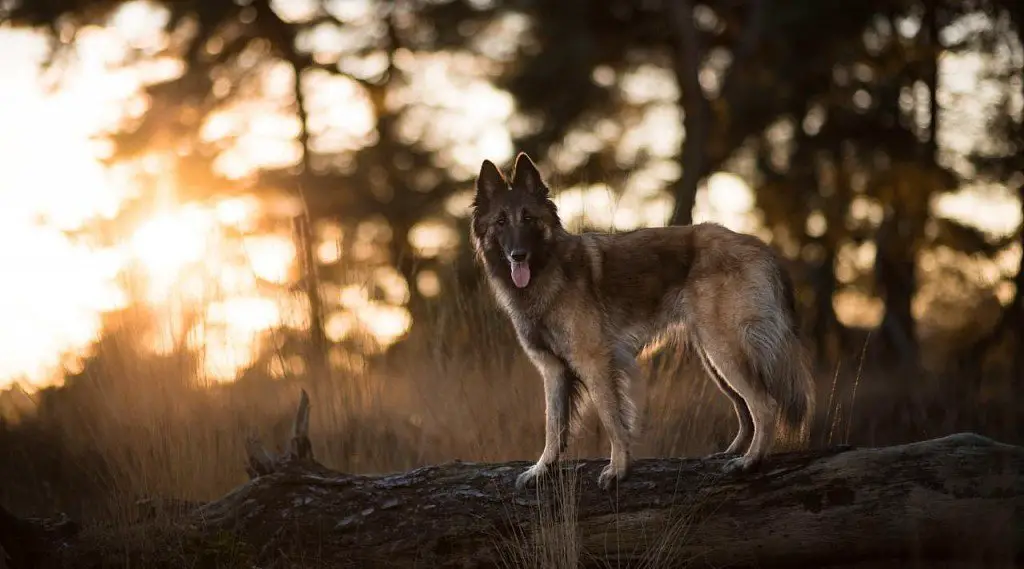
The Belgian Shepherd Dog embodies a love of freedom and an indomitable thirst for life that is visible to the naked eye. These traits have been inherent in the breed since the beginning of its existence when shepherd dogs were used as watchmen and shepherds while doing an excellent job with the task. To this day, animals are successfully realizing their potential in many areas of social life. At the same time, dogs have gained fame as friendly companions who will accompany their owner during walks, morning jogging, or just a trip to the store. This breed is not the easiest to handle, but if you have a tremendous experience of dog breeding behind you, go for it!
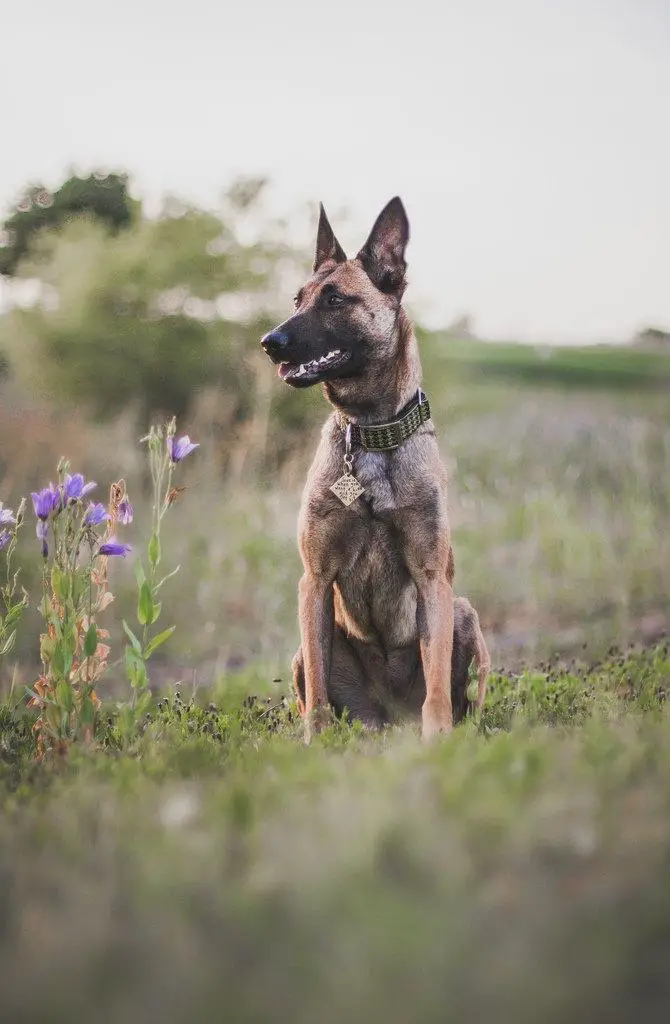
It would seem that the history of this shepherd dog should go back to antiquity. And indeed: even in written sources of the 17th century, there are references to four-legged shepherd assistants who followed numerous flocks. So, the first description of the Belgian shepherd dogs (or, at least, dogs very similar to them) dates back to 1650. However, in reality, the breed is relatively young and has existed for a little over a hundred years. How is this possible?
Everything is explained by the fact that in ancient times there were no people who would purposefully engage in breeding shepherd dogs. Moreover, the breed was not considered prestigious. Representatives of the European aristocracy did not bother to create cynological clubs, while their faithful preferred to keep representatives of other breeds as pets. The lion’s share of shepherd breeding fell on peasants, who attached great importance to the working qualities of dogs, and not to their attractive exterior.
By the second half of the 19th century, shepherd dogs were already distinguished by a huge palette of colors, but they were still valued only for their purpose – the ability to graze a flock, if necessary, gather sheep together and protect them from the attack of wild animals. The attitude of Belgian farmers towards these incredibly intelligent dogs was no exception. Everything changed with the start of the industrial revolution.
This was a watershed moment: the Belgian economy was recovering, and the accelerated pace of urbanization forced rural residents to move to larger cities. This negatively affected the popularity of herding dog breeds, which have lost their significance.
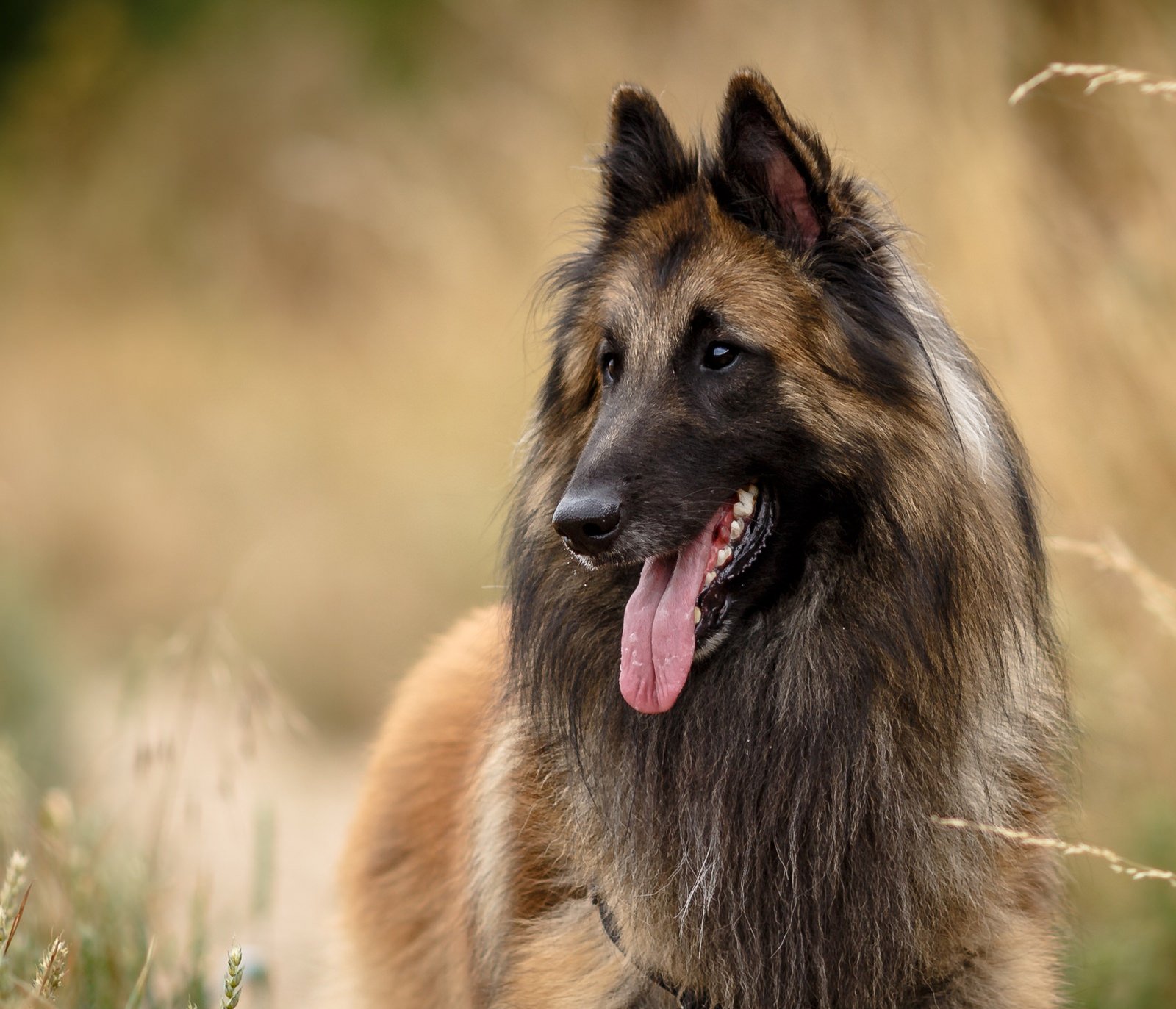
The Belgian Shepherd owes its appearance to the nationalism that swept Europe in the 19th century. While many countries sought to create such a breed of dog, which became their national heritage and was radically different from others. The end of September 1891 was marked by the developers in Brussels of the BSDC canine organization – the Belgian Shepherd Dog Club. In November of the same year, the first dog show was held in the city of Kurgan, where more than a hundred animals were presented. Among the guests of the event was Professor Adolph Riyul, who studied dogs and in the future planned to present a certain breed for each region of Belgium.
Only a third of the shepherd dogs present at the exhibition were recommended to scientists for further breeding. Riyul selected medium-sized animals, while not paying attention to the length and structure of the coat – only its quality mattered. In 1892, the professor presented the world with the first breed standard for the Belgian Shepherd Dog. The breeding of dogs lasted for about two decades. Initially, dog handlers identified three varieties of the breed, depending on the color. This prompted dog breeders, whose charges did not fit any of the three categories, to create a separate canine club and continue to independently breed animals. The confrontation lasted for several years until there was a merger of the clubs and, as a result, a change in the breed standard. To this day, it provides four categories of dogs:
1. Groenendael – black with a medium-length coat. They owe their name to a small village not far from Brussels.
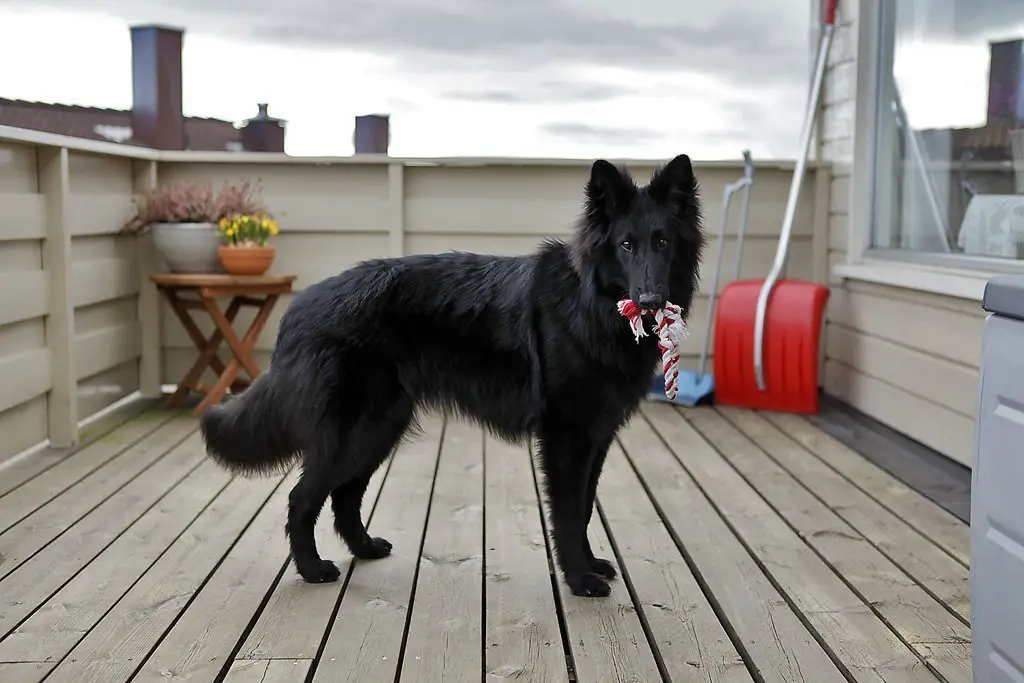
2. Lakenois – ash-gray color with long hair. The breed is named after the historic district of Laeken in the north of the capital.
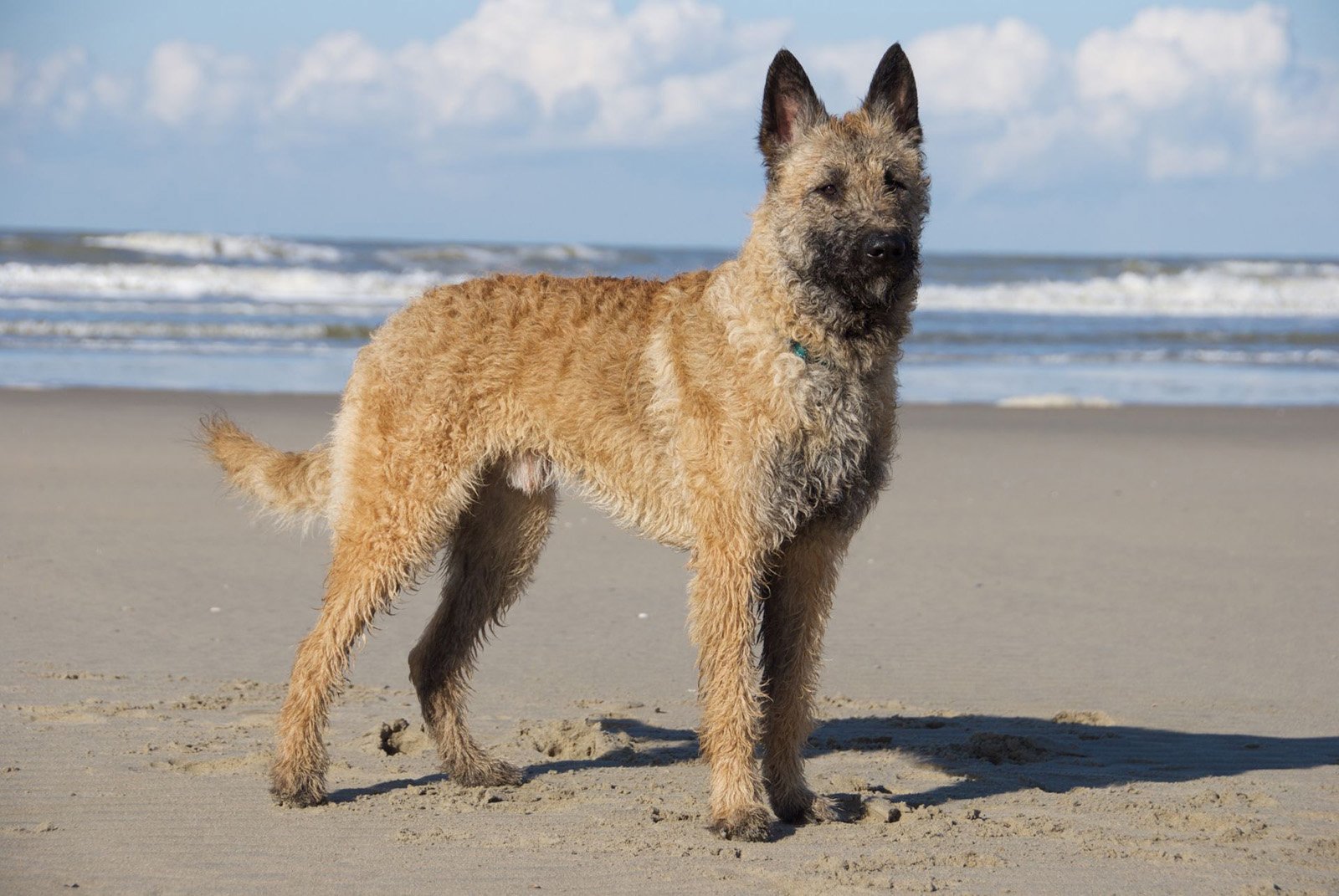
3. Malinois – coal or brown-yellow color with short hair. Inherited the name from the town of Malina (Mechelena).
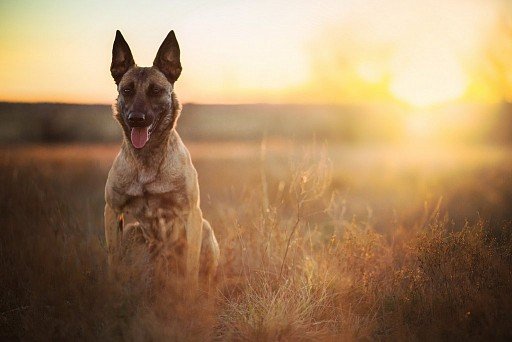
4. Tervuren is a coal-red color with long hair. The name of this breed category comes from the city of Tervuren, 8 km from the capital.
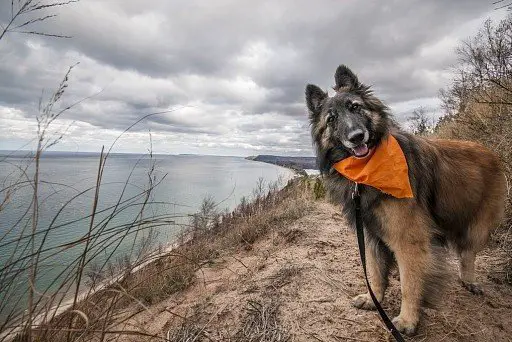
Controversy regarding the Belgian Shepherd Dogs does not subside to this day. Some breeders believe that these are different breeds of dogs, the Federation of Cynologists – that they are one and the same. In general, it is customary to adhere to the second point of view.
The next step on the way to the formation of the breed was the appeal of breeders to one of the main canine organizations of that time – the Royal Society of St. Hubert (RSSH). The breed recognition application was rejected. It was only after the final modernization of the standards in 1901 that the Belgian Shepherd Dog was officially recognized and registered by members of the RSSH. For the four varieties, standards were developed that predominantly fixed the color and length of the coat.
Since the beginning of the 20th century, representatives of the breed were among the first to join the Belgian police. At the same time, shepherd dogs were used to patrol the borders of the state and catch smugglers. In 1907, the Groenendals appeared in the United States. A year later, representatives of the breed were already actively patrolling the streets of France.
During World War I, Belgian Shepherds played an equally important role. The animals were responsible for guard duty, were military postmen, and helped to pick up the wounded from the battlefield. It was at that time that people took a different look at the breed and saw important features in it: courage, loyalty, and strength. Gradually, the Belgian Shepherd Dogs have earned the love of the whole world. However, it is worth noting that the popularity of the breed is uneven. The most preferred are Groenendael and Malinois.
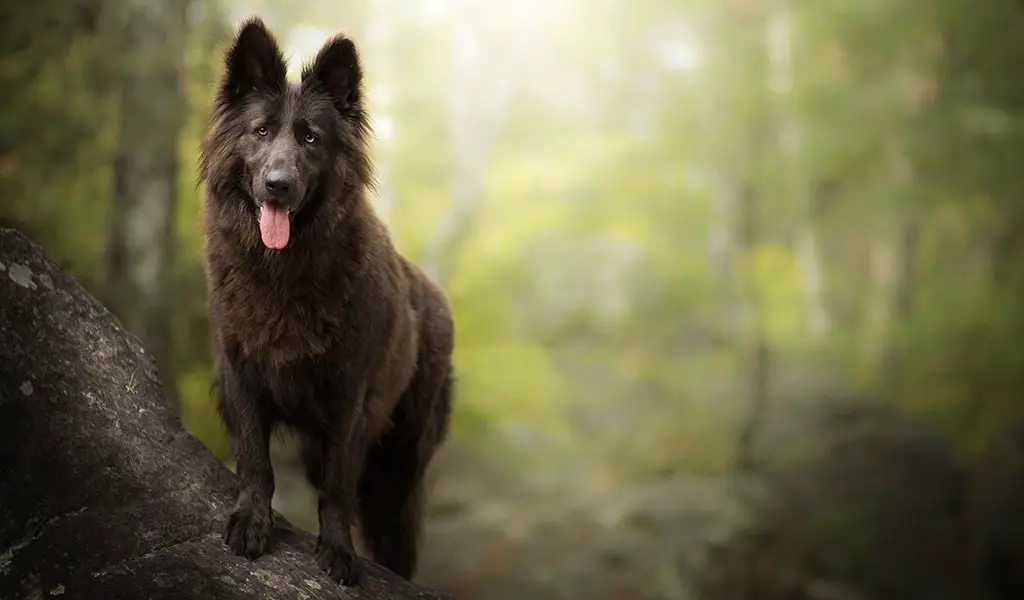
The Belgian Shepherd is a large breed of dog. These animals look elegant and harmonious, despite their rather large size. So, the height of males at the withers reaches 61-66 cm, while females usually grow up to 56-61 cm.
The weight of the Belgian Shepherd Dogs varies between 20-30 kg. Minor deviations from this standard are allowed.
The dog’s head is harmoniously folded, but at the same time, it looks rather dry. Moderately lengthened, set high. The skull is proportional to the head in all respects. The forehead of the animal is flattened and does not have a pronounced midline. When the head of the Belgian Shepherd is turned in profile, it becomes noticeable that the lines of the muzzle and forehead are parallel to each other. The cheekbones are poorly defined, but at the same time, they are distinguished by developed muscles. The same goes for the eyebrows of the animal.
The muzzle of the shepherd dog is not much longer than the skull and gradually tapers towards the end. The stop is moderate. The nostrils are wide open, the nose has a rich black pigmentation. Thin lips are tightly pressed to the jaws, the mucous membrane is characterized by the absence of pink areas.
The ears are set high and have an almost perfect triangular shape. Their tips are pointed, while the auricles are smoothly rounded at the base. When the Belgian Shepherd is alarmed by something, the ears are erect and straight.
The eyes are medium in size and almond-shaped. The pigmentation of the iris is brown, and the more intense it is, the better. The eyelids are “lined up” in black. The Belgian Shepherd Dogs have a lively and inquisitive look, from which not a single important detail escapes.
White teeth are set tightly in well-developed jaws. The standard provides for a scissor bite and a straight bite (while the latter is less preferable, but increasingly chosen by shepherds). The dental formula is complete. The absence of the first premolars is not considered a defect.
The neck is straight and rather elongated. The neck of the Belgian Shepherd Dog is set high and is characterized by the absence of dewlap. It expands towards the shoulder blades, has a smoothly curved nape.
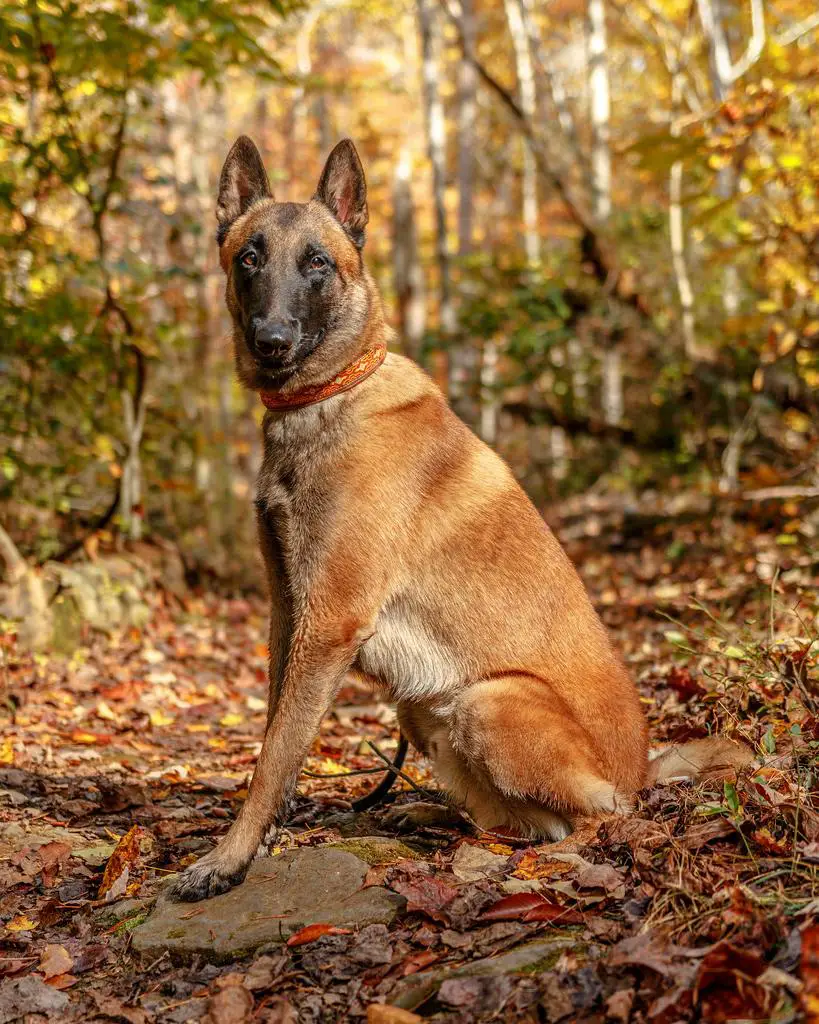
The massive body of the animal does not look heavy and is distinguished by the observance of certain proportions. So, in males, the body length corresponds to the height; females may have a slightly larger first parameter. The ribcage is moderately wide, but at the same time, it is voluminous, as in all dogs, which are characterized by excellent endurance. The ribs are gently curved. The pronounced withers merge into a straight topline. The abdomen is relatively tucked up, the croup is slightly sloped. The musculature is a relief.
The tail is medium in length and has a wide base. In a calm state, the animal keeps the tail down, only the tip is slightly curved upward at the level of the hock joints. In movement, the tail rises, while not bending or taking the shape of a hook.
The strong limbs of the Shepherd Dog have strong bones and well-developed muscles. Long shoulder blades and shoulders form a fairly wide angle for elbow movement. The forearms are surrounded by strong muscles. The short pasterns merge into rounded feet with curved and tightly clenched toes. Strong nails have rich dark pigmentation. Wide thighs and lower legs are moderately muscled. In this case, the latter is sufficiently bent towards the hock joints. The presence of dewclaws is undesirable. Feet are almost oval in shape due to clenched toes, which end in fleshy pads.
The Belgian Shepherd Dog is very active and in the movement has a habit of capturing considerable space. At the same time, due to its temperament, the dog does not adhere to a direct direction. The preferred pace is a calm walk and trot, less often a canter. The movements are springy and lively.
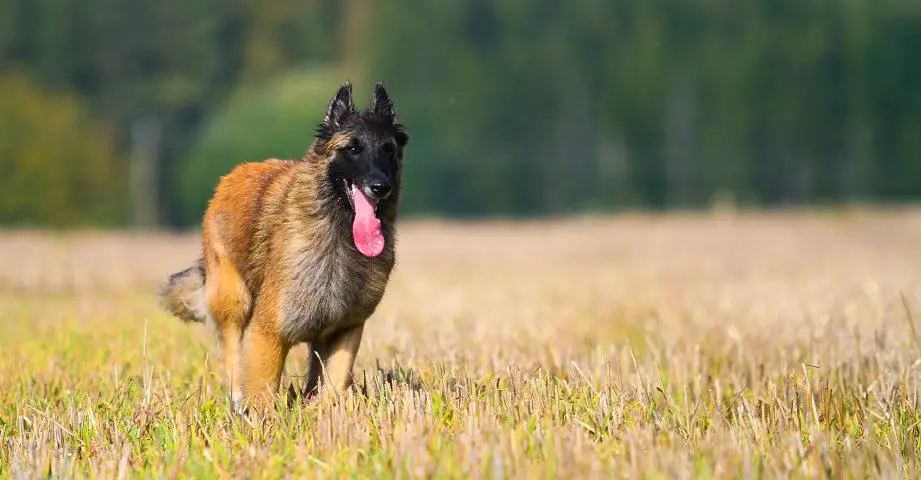
Despite the existence of four categories of the breed, in all cases, the coat of dogs is distinguished by density and density. This is where the similarities between the varieties of the Belgian Shepherd end:
1. Grunendael – the owner of a long, smooth coat with a thick undercoat that protects the dog from adverse weather. There is no glossy shine of the hairs.
2. Lachenois is characterized by a rough and rough-to-the-touch coat, which is often disheveled. On the limbs and muzzle of the animal, the coat is much shorter.
3. Malinois – short-haired breed type. Longer hair is acceptable around the animal’s neck (where it forms a small collar from ears to the throat), on the thighs (fringes), and on the tail.
4. Tervuren is similar in coat type to the Groenendael, but on the head and lower extremities the coat is much shorter. Eyebrows, mustaches, and beards are visible on the face.
The color of the animal depends on its belonging to a particular category:
1. The wool of the Groenendael is a deep black color. In this case, white points may be present on the chest and fingers.
2. Lakenois has a reddish color interspersed with white. A darker shade of coat is acceptable on the muzzle and tail.
3. Malinois – owners of reddish-coal-colored wool. The animal’s muzzle and ears are framed with a black “mask”.
4. The color of the Tervuren is similar to that of the Malinois, but the coat of the dog is as long as that of the Groenendael. Chest and toes can be marked in white.
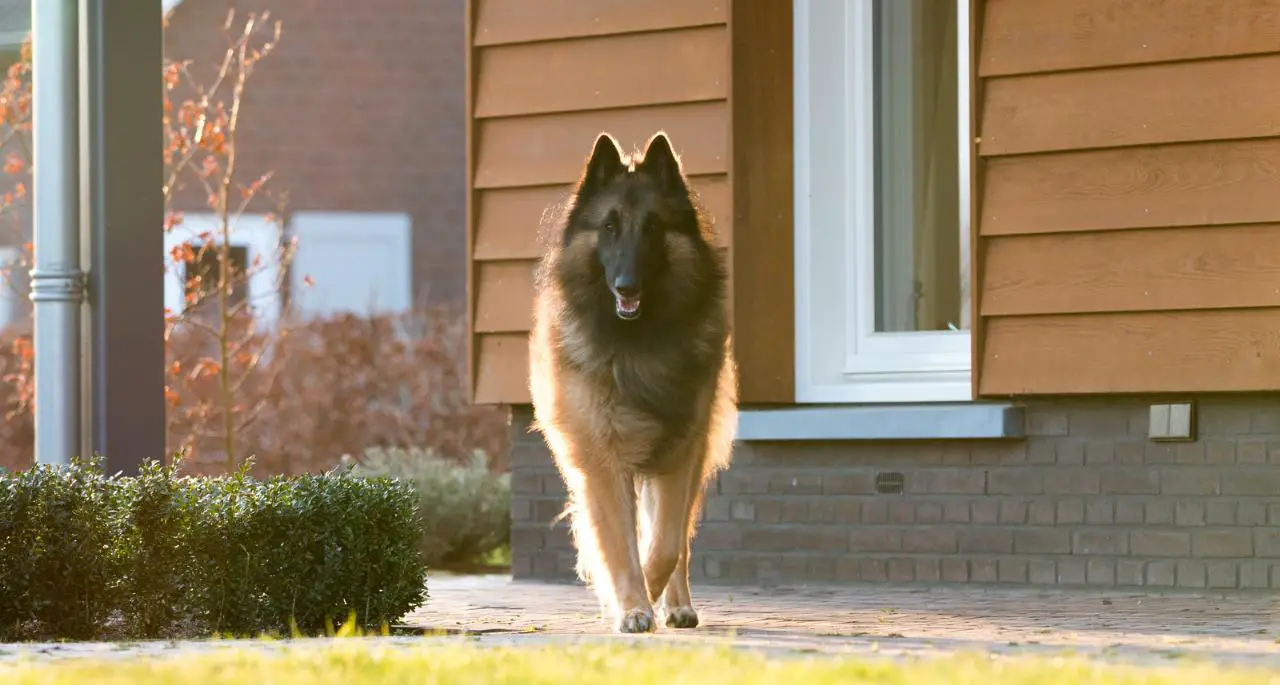
Any deviation from the breed standard is considered a defect. Among the most common:
- partial pigmentation of the eyelids, nose, and lips;
- cowardly or aggressive behavior;
- weakened hock joints;
- light pigmentation of the iris of the eyes;
- asymmetrical “mask” on the face;
- lack of a thick undercoat;
- slight overshot;
- hooked tail;
- straight shoulders.
The disqualifying vices of the Belgian Shepherd Dog include:
- docked tail or lack of it from birth;
- overly aggressive or cowardly nature;
- white points on the body (except for the fingers and chest);
- artificially set or hanging ears;
- pronounced undershot or overshot;
- absence of three premolars;
- cryptorchidism.
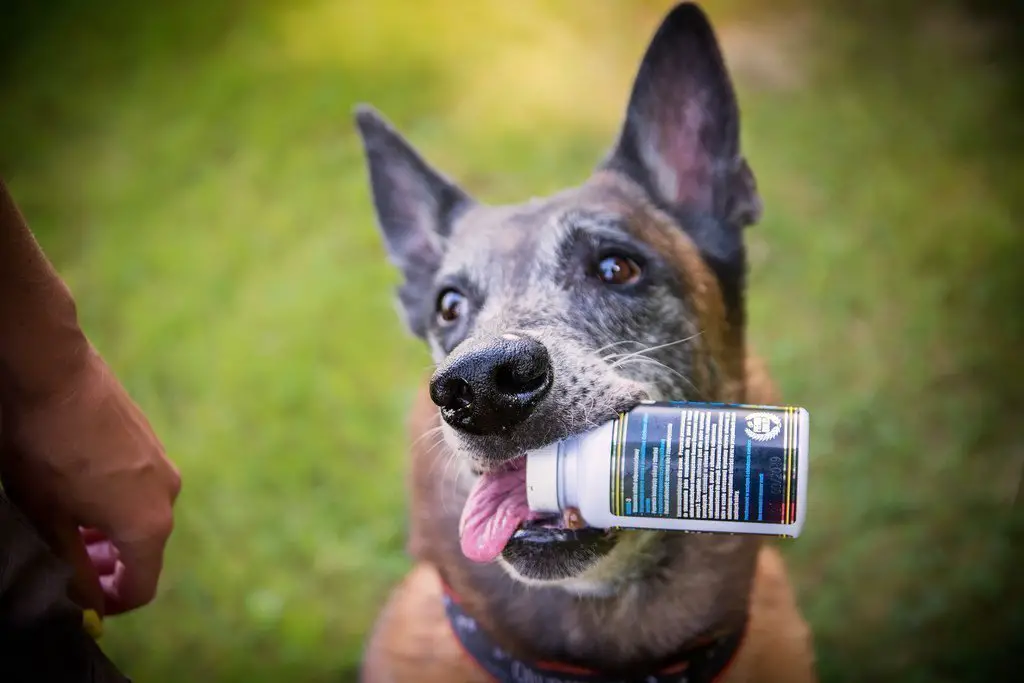
The Belgian Shepherd is a very versatile breed due to the fact that each of the four categories has its own unique character. At first, it is not striking. However, if you interact directly with Belgian Shepherd Dogs of all types, you will easily notice that they behave slightly differently, although in general, they combine certain characteristics of each other.
The Groenendael is ideal as a guard dog. From the close attention of the shepherd, not a single offender will escape, the appearance of which she will notify those around her with loud barking. Feelings of fear or shyness towards strangers are not inherent in the Groenendael. However, in the presence of the family, the shepherd dog shows caution and does not immediately gain confidence in the person he sees for the first time in his life. The rest of the Groenendael is a mobile animal that is famous for its tendency to take care of and take care of each member of its family. The ideal environment for this Belgian Shepherd will be people who prefer to lead an active lifestyle and thereby provide her with the opportunity to stretch her paws. Otherwise, the Groenendael will throw out the accumulated energy on its own – and not always in the right direction. Present your pet with a game with a ball or a frisbee, engage him in practicing herding and searching skills – and the happiness of your Belgian will know no bounds!
Laekenois combines contradictory qualities: playfulness and seriousness, vigilance and detachment, the desire to move mountains, and the desire to lie down in a ball at the feet of the owner. Like the Groenendael, this breed of the Belgian Shepherd perfectly copes with its guard duties and, if necessary, will enter into a fierce battle with the enemy, wanting to protect the owner. Laekenois gets along well with other pets if he grew up side by side with them. However, it is better to refrain from decorative rats, chinchillas, hamsters, or parrots. As for the pastime, the Belgian Laenois prefer active walks in the fresh air, during which it is necessary to give the animal certain physical activity.
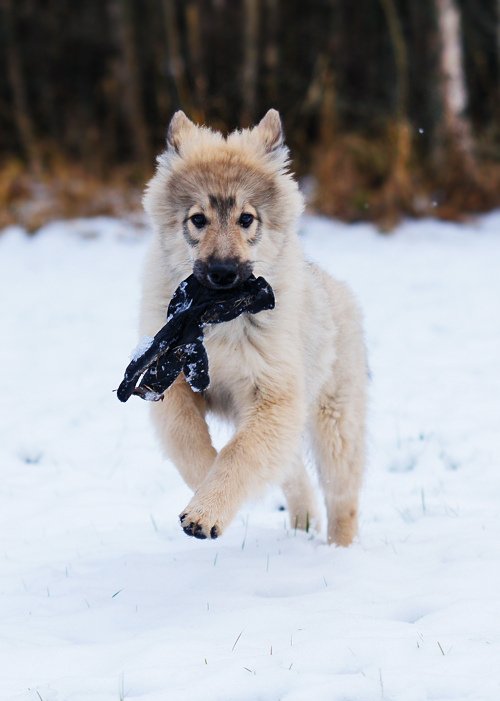
Malinois, like his fellows, needs a regular “shake-up” to release the accumulated energy. Otherwise, this is a completely balanced and obedient dog that will follow the owner on the heels and greedily catch him every word. The Belgian Malinois is not the kind of pet that prefers solitude and peaceful sleep in a remote corner of the apartment. The owner of a shepherd dog should pay as much attention to her as possible while remaining a strict but loving owner. However, the first may not be needed: among all the varieties of the Malinois breed, it has gained fame as a dog with the most flexible character.
Tervuren, on the other hand, is known for his impulsive and lively temperament. It is noteworthy that initially these animals were distinguished by a timid and shy character, which was almost completely eradicated as a result of correct breeding. Belgian Tervuren’s actively respond to any stimulus, so in the blink of an eye, they get involved in a fun game with the owner or in pursuit of his offender. By the way, this shepherd dog experiences an extreme degree of affection only for one of the family members, so becoming this very person is your main task. Tervurens do not tolerate loneliness and always try to compensate for it with torn slippers or a broken vase.
Of the general character traits inherent in all varieties of the breed, there are:
- the dog’s ability to make decisions independently;
- sensitivity – the Belgian Shepherd Dog reacts sharply to any criticism of the owner;
- excellent adaptation to new conditions;
- the tendency to dominate other animals.
The Belgian Shepherd is one of those dog breeds that need proper socialization. Moreover, it must be started from puppyhood. Arm yourself with insight: it is she who will help to feel and understand the psychology of the pet. If you are not confident in your abilities, seek advice from a dog breeder with many years of experience in breeding and keeping Belgian Shepherd Dogs. Note: females are more docile and calm than males who like to show independent temperament.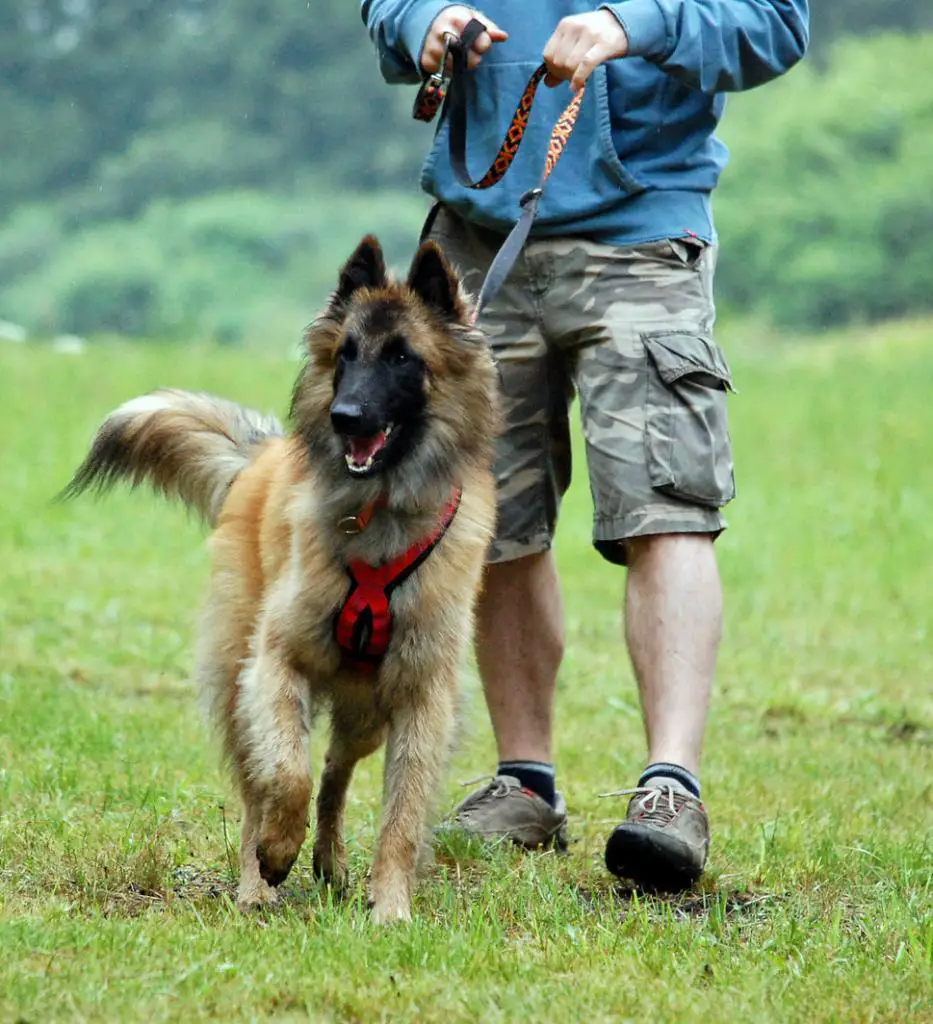
It is recommended to start raising a puppy from the very first day of his appearance in the house. At first, do not bore the baby with long walks and active games. If the Belgian is blissfully stretched out on his favorite bedding and is looking forward to the long-awaited rest, there is no need to bother the baby in vain. He has yet to learn how to respond to the nickname, walk next to you on a harness and not relieve himself before the set time.
Your pet’s name should be short and only associated with positive emotions. Do not refer to the puppy by name, making a remark, or scolding for spoiled things. In this case, the baby will be reluctant to respond to the nickname, since he will expect unpleasant actions from you in advance.
As for the training of the Belgian Shepherd, there are nuances here, which depend on the variety of the breed.
There is no better occupation for a Groenendael than doing the tasks assigned to it. The dog perceives training as a game with benefits, so it does not create additional problems. However, the independent character of the animal can become an obstacle to achieving the goal (especially for a soft person). Start training as early as possible and refrain from long breaks, otherwise, you will never achieve obedience from your pet. In rare cases, the intervention of a professional may be required to direct the Belgian Shepherd’s activities in the right direction.
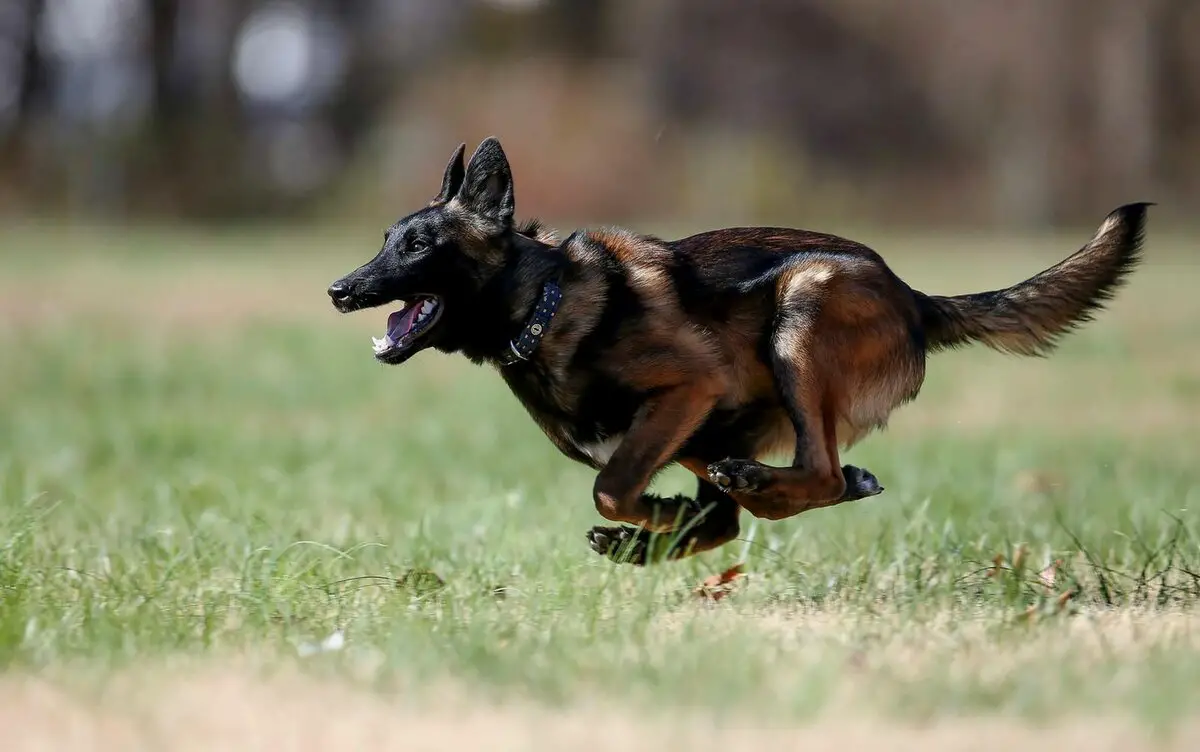
Laquenois lends itself to many types of training and happily takes on the activity suggested by the owner, whether it be running with obstacles or chasing prey. This dog is famous for its tirelessness: rather, you will get tired of inventing new tasks for the pet. Positive training methods are your main weapon. Excessive persistence and strict tone will have the opposite effect: the animal will not listen to your commands. The Belgian Laekenois is the most malleable material: it can be used to raise a police dog, a brave rescuer, or a wonderful security guard.
In addition to competent training, the Malinois needs regular training on the young animals’ playground. So the dog will not only get used to communicating with its relatives but also learn how to correctly execute commands under the guidance of a professional trainer. Malinois quickly assimilates new information due to their observation and highly developed intelligence. However, these same traits can play a cruel joke with the owner of the animal if he cannot devote enough time to the shepherd dog. As with the Groenendael and Laquenois, the Belgian Malinois needs early training.
Tervuren strives for dominance and independence more than other varieties of Belgian Shepherd Dogs. These dogs need intensive obedience training. It is necessary to avoid excessive despotism and rudeness: the animal will accept such behavior of the owner with hostility – and you can forget about unquestioning obedience. Consistency, patience, and fairness are your faithful companions in pet training.
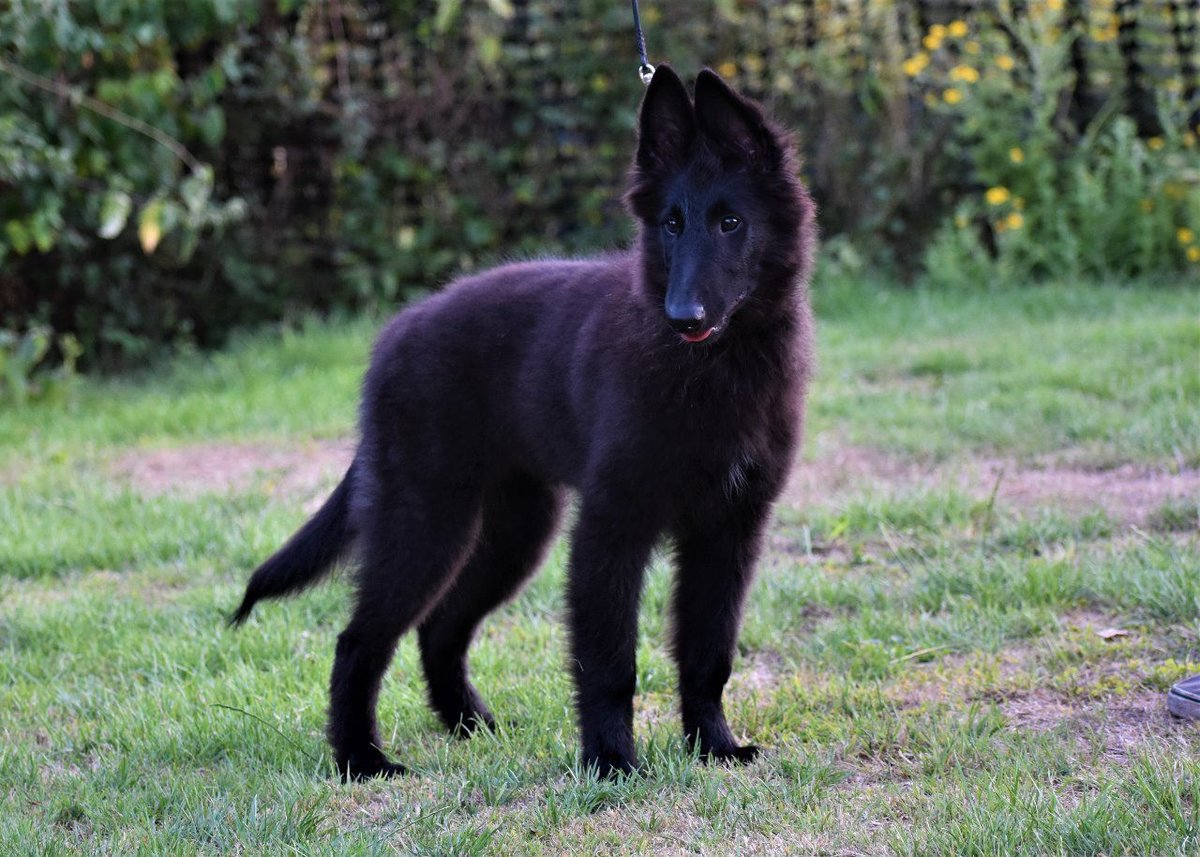
Taking care of the Belgian Shepherd Dog is very time-consuming – mainly due to the dog’s coat. Representatives of the breed molt twice a year – in summer and winter, so during this period it is necessary to carefully comb the dog. The rest of the time, it is enough to repeat the procedure once or twice a week, depending on the age of the animal. At the same time, it is not recommended to purchase a comb with frequent teeth: these devices will not provide delicate removal of dead hairs. When brushing the dog, guide the comb slowly and in the direction of the coat: this will help to avoid torn clumps.
Please note: grooming of the Belgian Shepherd varies depending on which category the dog belongs to.
The Groenendael is prone to very profuse shedding, so be prepared to find wool everywhere: on clothes, in bed, and even on the kitchen table. During this period, you should brush your dog every day.
Laekenois – the lucky owner of curly hair – needs to be trimmed twice a year to keep the animal looking neat and well-groomed. For combing, it is better to purchase a massage brush with hard and sparse teeth.
Of all the types of Belgian Shepherd Dogs, the Malinois is the most unpretentious to care for, as its coat is short and smooth. Brush your pet once a week. This is enough to remove dead hairs and give the dog a presentable appearance.
Tervuren’s double coats are prone to frequent mats, so it is recommended that you brush your shepherd at least twice a week. In addition, you will need to periodically trim the paws between the toes.
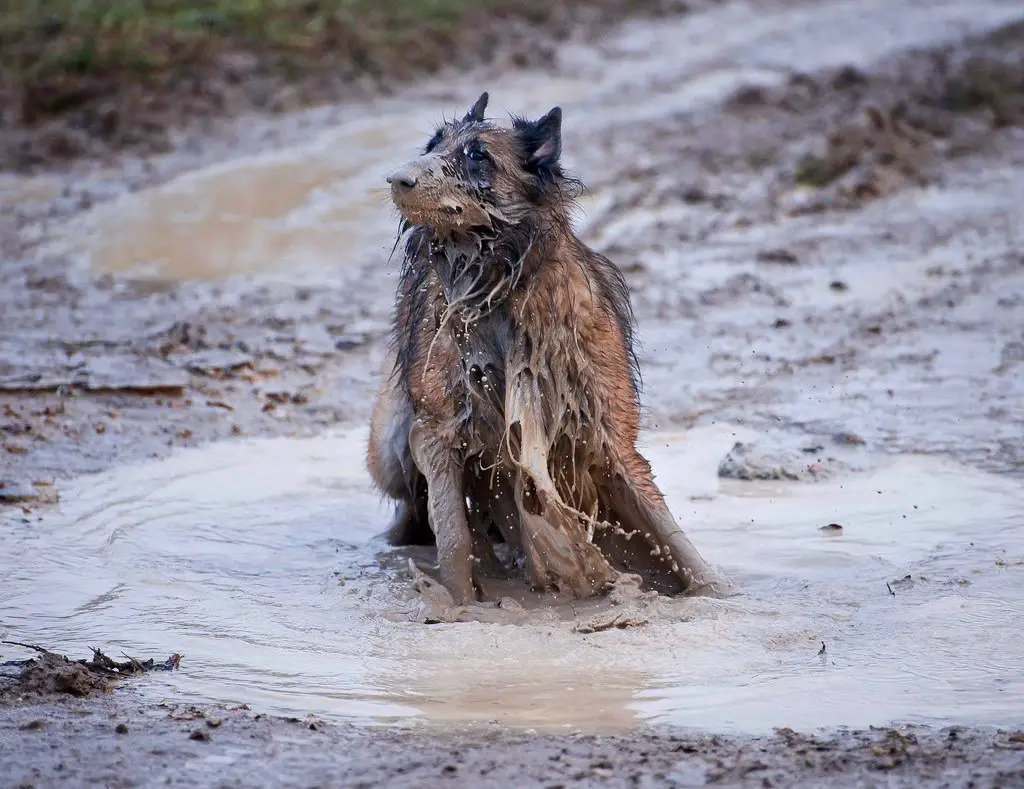
Try to bathe the Belgian Shepherd as little as possible: even special shampoos can cause the animal’s coat to lose its stiffness and pleasant dullness. If it seems to you that your pet smells like a “dog”, use special products to eliminate the unpleasant odor.
Examine your dog’s eyes and ears regularly for discharge. To remove them, you must use a cotton swab dipped in warm water or tea leaves. In case of infectious diseases, you should immediately contact your veterinarian.
Since the Belgian Shepherd Dog spends a lot of time outdoors, its nails grind down on their own. On rare occasions, you may need a large breed nail clipper. After shortening the nails, use a nail file to remove the jagged edges over the sharp edges.
Caring for the animal’s oral cavity is equally important. To brush your teeth, you need to purchase a special brush or finger attachment. It is strongly not recommended to use “human” toothpaste: hygiene products for dogs are sold in almost every pet store.
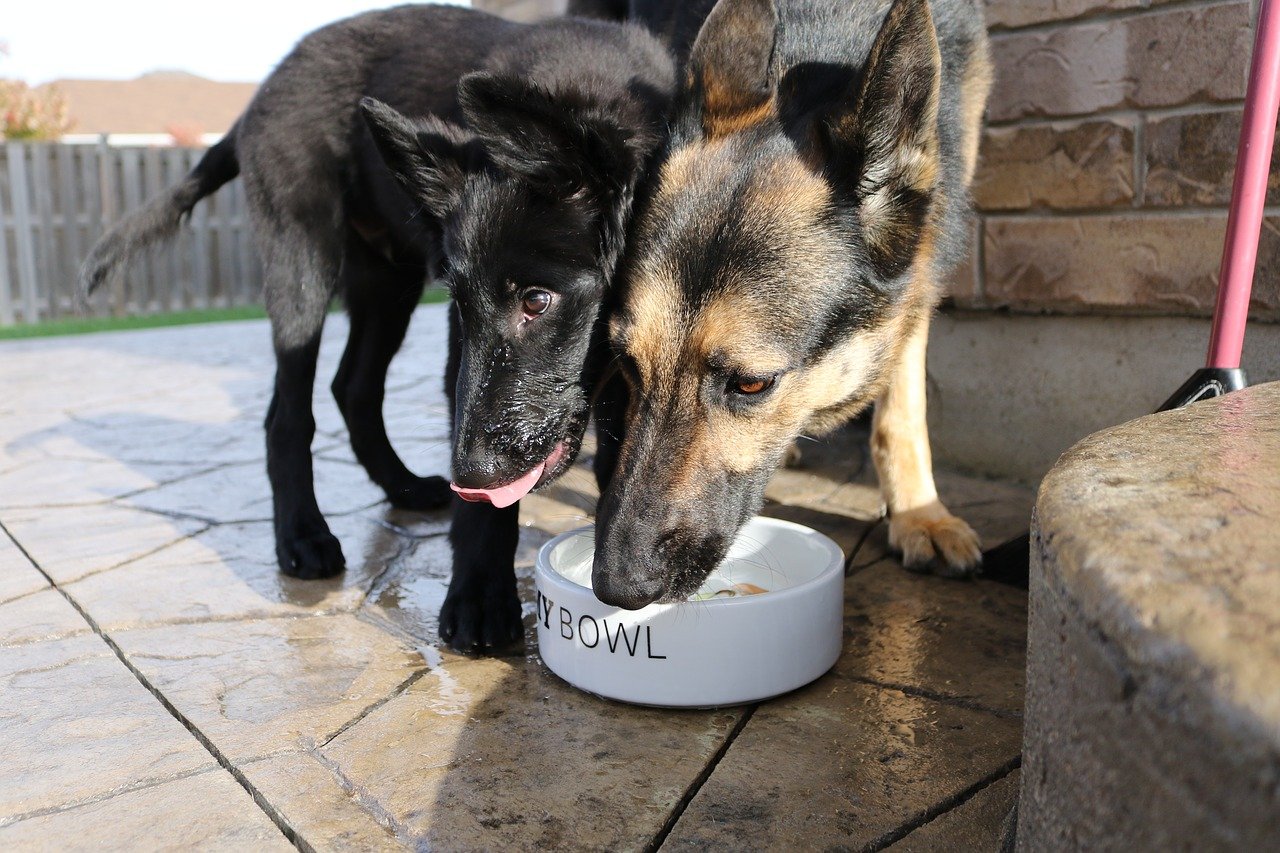
As for the diet of the Belgian Shepherd, it should be varied. The full development of the dog is provided by proteins of animal and plant origin. Carbohydrates are equally important – your pet’s main source of energy. Fats play a similar role. If you prefer to feed your dog with natural food, you need to “dilute” it with a vitamin-mineral complex, without which the animal’s body will not function properly. Also, note that dry food is poorly absorbed by the shepherd’s digestive system and can cause bloating or cramping.
In feeding the animal, it is important to adhere to a certain regimen. Try to fill the pet’s bowl at a strictly set time – and you will not have to feel like a callous person, ignoring the dog’s plaintive gaze directed at the next treat.
Do not treat the Belgian Shepherd:
- river fish in any form;
- dairy products;
- raw meat and eggs;
- fruits with seeds;
- tubular bones;
- yeast dough;
- sweets;
- legumes.
There should always be clean water in the animal’s bowl, which should be changed regularly. It is undesirable to give water directly from the tap; let it brew for 6-8 hours.
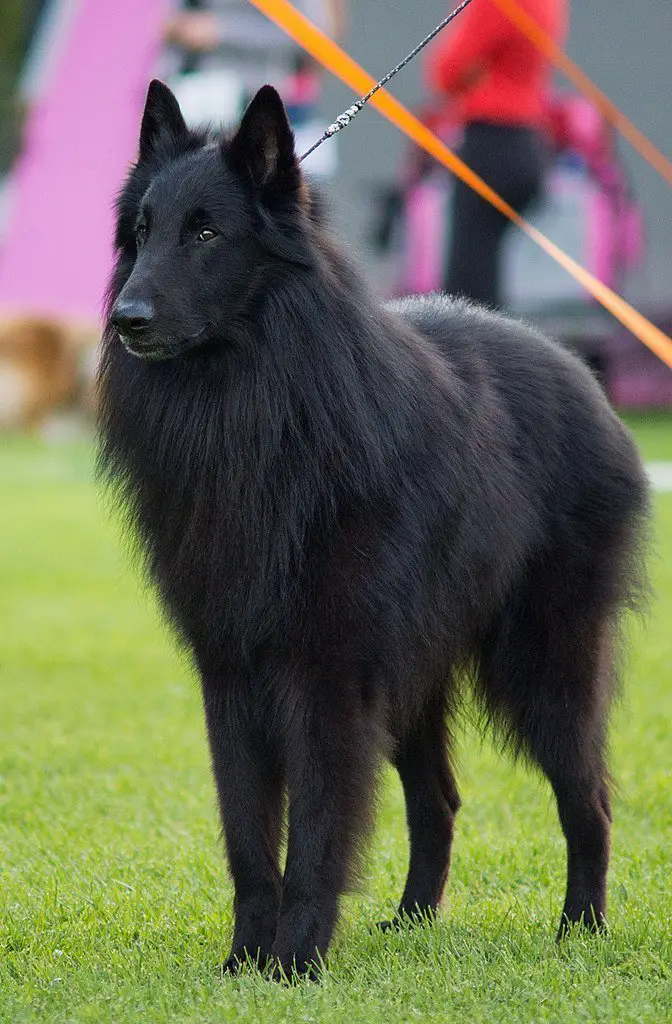
The Belgian Shepherd Dog is the owner of strong immunity, which is supported by the timely vaccination of the animal and regular examinations by the veterinarian. However, some diseases are more common than others. Among them are:
- deficiency of thyroid hormones;
- cramps and bloating;
- dysplasia of the joints;
- volvulus;
- epilepsy;
- cataracts.
Belgian Shepherds are prone to obesity, so do not overfeed your pet, no matter how tearfully he asks to fill the bowl.
How to choose a puppy?
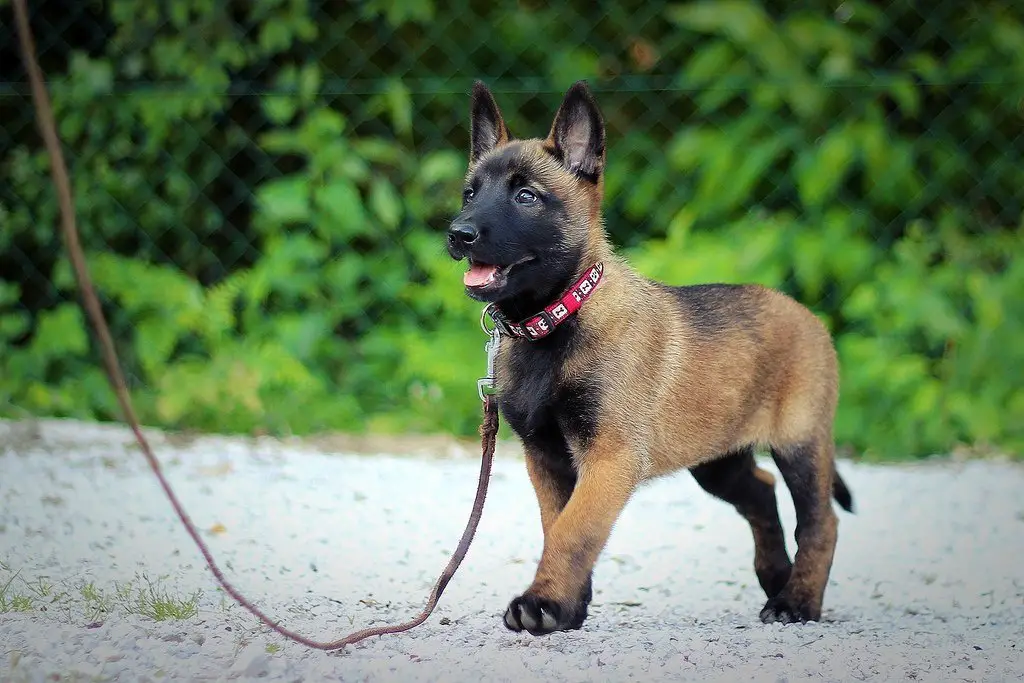
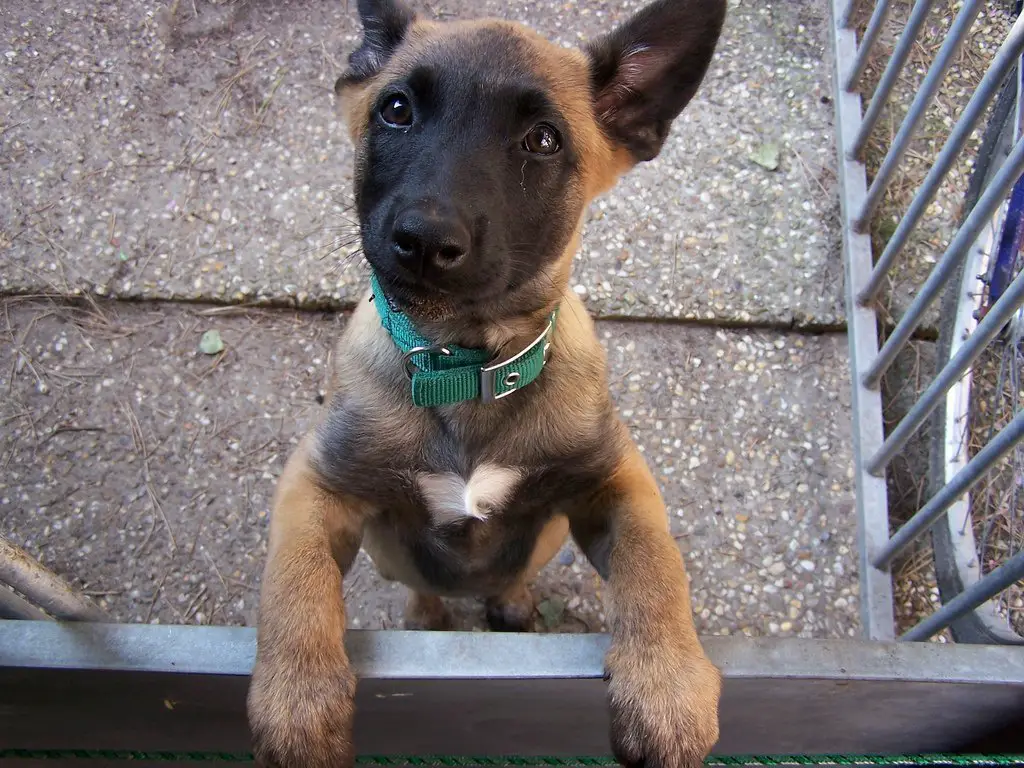
Choosing a four-legged toddler is a crucial step, regardless of which breed you ultimately preferred. First of all, ask the breeder to introduce you to the parents of the puppies. This will allow you to understand what qualities and character traits you can count on when taking a baby from this litter. Pay attention to the age of the puppies. Ideally, they are weaned from their mother at two months.
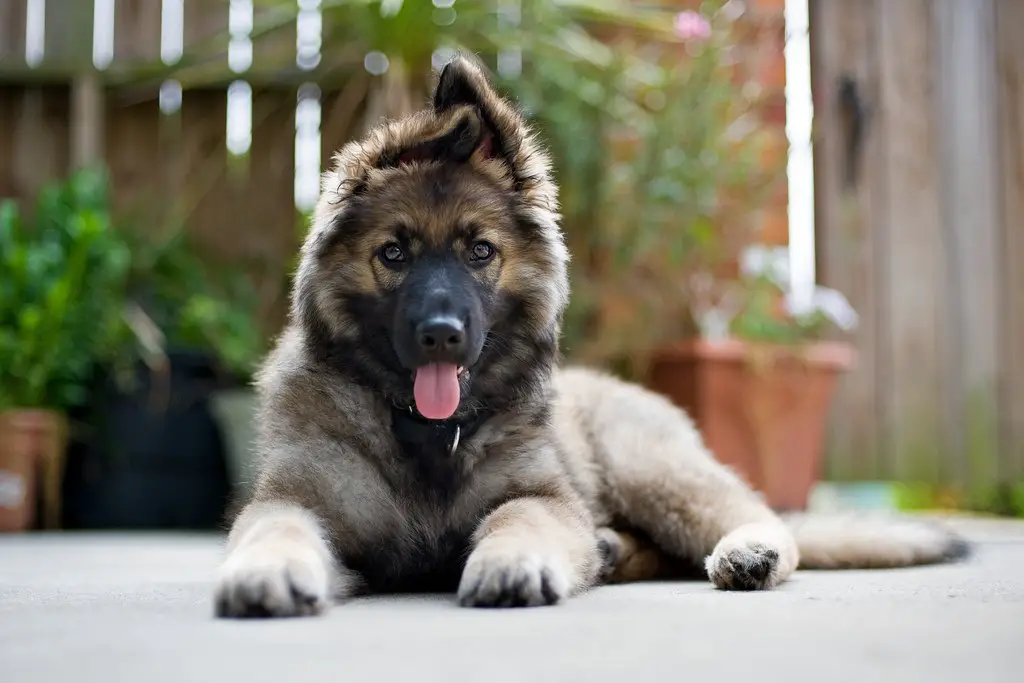
By that time, the Belgian Shepherd had already formed a holistic picture of the world, and mental health was beyond doubt.
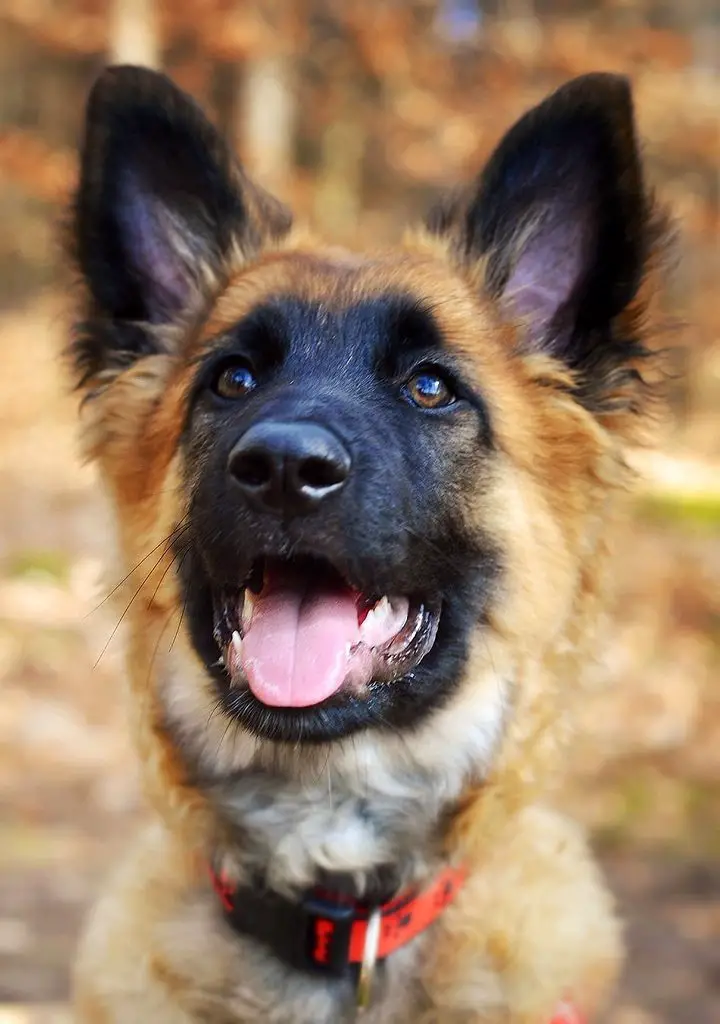
Now you can start getting to know the shaggy little ones. Look for the most active and lively: he definitely will not give you trouble, often ill or not wanting to take part in games and education. Excessive fearfulness and lethargic behavior should alert the potential owner of the Belgian Shepherd Dog.
And finally: do not buy a puppy at one of the bird markets, where they will certainly try to attract at a low price. In the future, you will spend a lot more money traveling to the best veterinary clinics in town.

